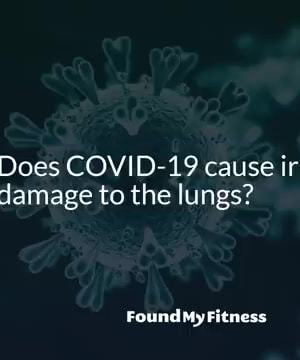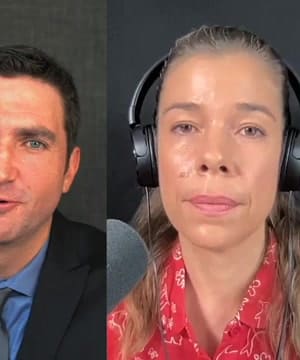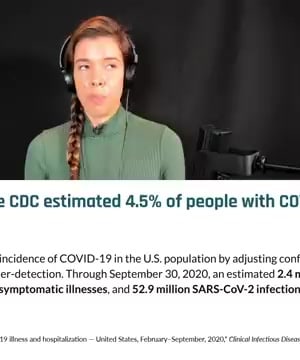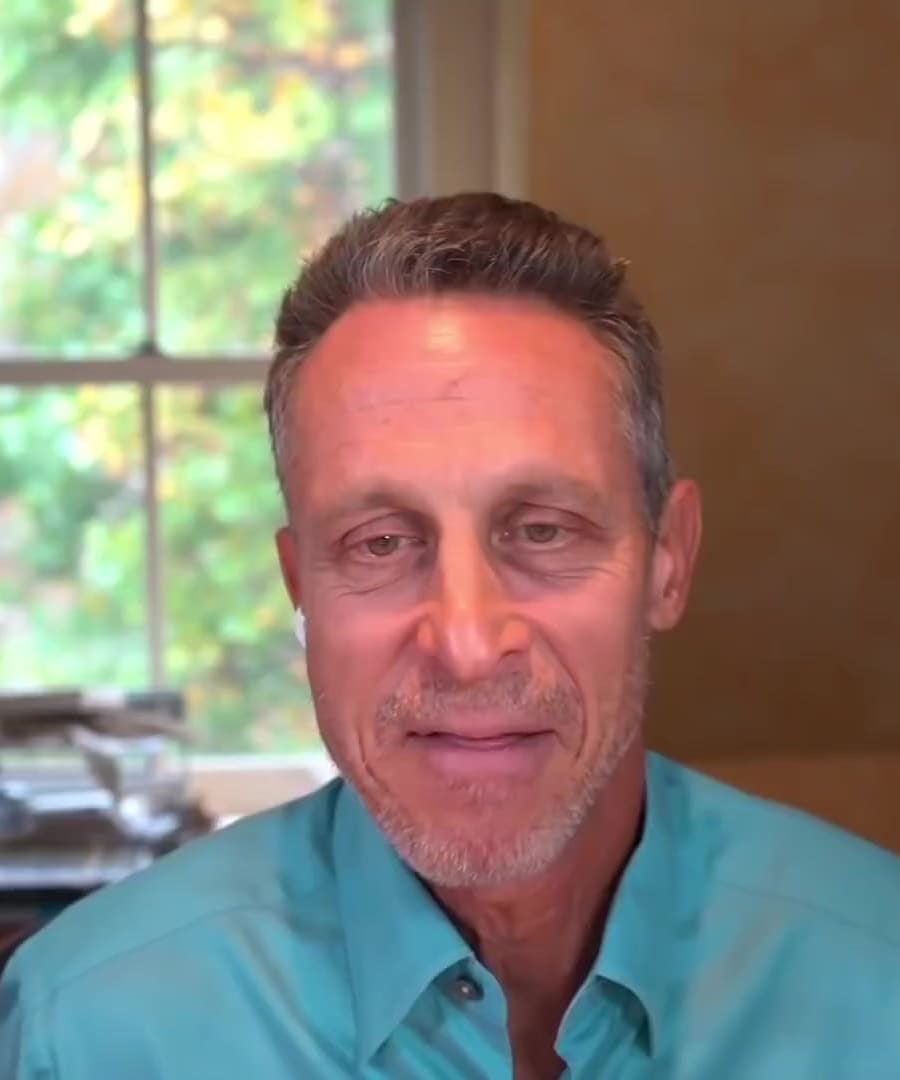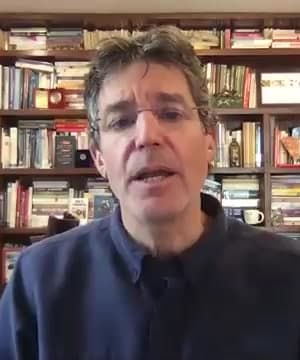pulmonary fibrosis
Sources:
Pulmonary fibrosis, a potentially fatal disease, is discussed in several podcast episodes, focusing on different aspects of its treatment and research advancements:
-
Martine Rothblatt's Journey:
- Podcast:
- Episode: "Strategies that promote longevity now – and in the near future"
- Summary: Peter Diamandis highlights Martine Rothblatt's efforts to treat her daughter’s pulmonary fibrosis. Rothblatt, without a background in biology, started from scratch and eventually developed a drug to manage her daughter's condition. She further pursued the development of humanized pig organs for transplants, greatly advancing potential treatments for pulmonary fibrosis 1.
-
Vitamin A Toxicity from Liver Consumption:
- Podcast:
- Episode: "Is autoimmune disease reversible? With Terry Wahls, MD"
- Summary: Terry Wahls talks about the risks of vitamin A toxicity from liver consumption, which can lead to pulmonary fibrosis and cirrhosis. This discussion is particularly relevant for individuals on a carnivore diet, emphasizing careful monitoring of retinol levels to prevent these conditions 2.
-
Idiopathic Pulmonary Fibrosis Treatment:
- Podcast:
- Episode: "Can Artificial Intelligence Extend Lifespan? | Alex Zhavoronkov"
- Summary: Alex Zhavoronkov explains their approach in developing molecules to treat idiopathic pulmonary fibrosis. This includes choosing the disease first, then optimizing targets for novelty, confidence, and commercial tractability before designing the molecule 3.
-
Link with COVID-19:
- Podcast:
- Episode: "COVID-19 Q&A #2"
- Summary: Rhonda Patrick discusses how severe COVID-19 can cause irreversible lung damage, often leading to conditions like pulmonary fibrosis. Acute respiratory distress syndrome (ARDS) caused by COVID-19 can result in long-term lung damage and decreased quality of life 4.
These clips provide insights into ongoing research, potential treatments, and risk factors associated with pulmonary fibrosis, highlighting the condition's complexity and the innovative efforts to address it.
RELATED QUESTIONS-
How does COVID-19 cause pulmonary fibrosis?
Sources:
COVID-19 can lead to pulmonary fibrosis, primarily through the complication known as acute respiratory distress syndrome (ARDS). Here's a summary of how the process unfolds:
-
Complications from Severe COVID-19:
- Severe cases of COVID-19 can result in conditions such as pneumonia and ARDS. In ARDS, fluid leaks into the tiny air sacs in the lungs, impeding air exchange.
- This can cause irreversible damage, as ARDS often leads to pulmonary fibrosis, where scar tissue builds up in the lungs. This scarring can significantly decrease lung function and quality of life, and it can potentially lead to death 1.
-
Study on COVID-19 Patients:
- A study in Wuhan found that out of 191 confirmed COVID-19 patients, 50 out of 54 who died had developed ARDS. Comparatively, only 9 out of 137 survivors had ARDS. This underscores the high risk of mortality associated with ARDS 1.
-
Long-term Impact on Survivors:
- Survivors of ARDS often suffer from long-term lung damage. For instance, a study showed that 5.5 years after discharge, ARDS survivors had a 25% reduction in physical function. This indicates that the lingering effects of pulmonary fibrosis can be long-lasting and significantly impact survivors' lives 1.
This explanation highlights the severe implications of ARDS triggered by COVID-19 and its potential to cause long-term pulmonary fibrosis.
RELATED QUESTIONS-
What is ARDS in detail?
Sources:
What are the long-term effects of COVID-19?
Sources:
The long-term effects of COVID-19, often referred to as "long COVID," encompass a range of persistent symptoms and health issues beyond the acute illness. Here are some key insights into these long-term effects:
-
General Symptoms:
-
Neurological and Cognitive Effects:
- COVID-19 can lead to significant brain atrophy, impacting regions associated with smell, memory, and learning. Even mild cases can result in this type of brain damage 4. There is also evidence of neurological damage leading to conditions like psychosis and a documented decrease in cognitive functioning, such as IQ loss 5 3.
-
Cardiovascular and Respiratory Issues:
-
Organ Damage:
-
Autoimmunity and Systemic Inflammation:
-
Mental Health Implications:
The landscape of long COVID is still evolving, and ongoing research aims to better understand and manage these long-term effects.
RELATED QUESTIONS-
Are there personal stories from COVID-19 survivors with pulmonary fibrosis?
Sources:
I couldn't locate relevant clips or expert commentary specifically addressing ARDS, long-term effects of COVID-19, or personal stories from COVID-19 survivors with pulmonary fibrosis. If you have any other specific queries or need insights on these topics, feel free to let me know!
RELATED QUESTIONSWhat do experts say about COVID-19 and pulmonary fibrosis?
Sources:
Experts have highlighted several key concerns and findings about the impacts of COVID-19 on pulmonary health and fibrosis:
-
Long-Term Lung Damage: explained that severe COVID-19 complications, such as pneumonia and acute respiratory distress syndrome (ARDS), can lead to irreversible lung damage, including pulmonary fibrosis. This condition results in scar tissue build-up in the lungs, significantly lowering the quality of life for survivors 1.
-
Physical Impact of Severe COVID-19: Data from survivors show lasting impacts. Follow-up studies on ARDS survivors indicate substantial reductions in physical capabilities and quality of life even five years post-recovery. These patients often experience a significant decrease in their physical functions and overall health compared to pre-illness conditions 1.
-
Uncertainties and Potential Long-Term Effects: noted the challenges in determining the long-term effects on lung function from past coronavirus infections like SARS and MERS, suggesting that fibrosis and other long-term damage were likely but not well-documented. The need for more detailed follow-up and research was emphasized to better understand these consequences 2.
In essence, pulmonary fibrosis is a serious and potentially lasting consequence of severe COVID-19, with survivors facing ongoing health challenges. The extent and permanence of these effects are still under study, demanding further research and targeted healthcare approaches.
RELATED QUESTIONS-
What is ARDS in detail?
Sources:
Acute Respiratory Distress Syndrome (ARDS) is a severe lung condition that can arise from various triggers, including infections like COVID-19.
Key Characteristics and Mechanisms:
-
Rapid Onset: ARDS develops quickly, over days or weeks, rather than months or years, highlighting its acute nature 1.
-
Lung Function and Inflammation: The condition involves the failure of the lungs to carry out their primary function—exchanging oxygen and carbon dioxide. This is caused by thickening of the alveolar membrane, which impedes gas exchange. The alveoli, the tiny air sacs in the lungs, become filled with inflammatory fluid, making breathing extremely difficult 2 3.
-
Cytokine Storm: In severe cases, an overblown immune reaction known as a cytokine storm can occur. This can lead to multiple organ failure as the body attacks its own tissues in a frantic attempt to battle the infection 4.
-
Impact of COVID-19: A significant number of COVID-19 deaths have been due to ARDS. The virus binds to ACE2 receptors in the lungs, leading to lung cell damage and severe immune responses that fill the lungs with fluid and inflammatory cells 1 5.
Symptoms and Diagnosis:
- Breathing Difficulties: Individuals typically experience severe shortness of breath and a persistent cough, often accompanied by a substantial reduction in oxygen levels.
- Imaging: On chest X-rays or CT scans, the lungs often appear opaque or "whited out," indicating fluid and inflammatory cell accumulation.
Treatment and Prognosis:
- Supportive Care: The primary treatment is supportive care, often involving mechanical ventilation to assist with breathing. However, using ventilators can sometimes worsen lung damage in parts of the lungs that were initially uninjured 6.
- Repositioning: Simple interventions, like repositioning patients to enhance oxygenation, can sometimes prevent the need for mechanical ventilation 6.
- Comorbidities: The presence of other health conditions, such as hypertension, diabetes, and obesity, significantly increases the risk of developing ARDS and suffering worse outcomes 7.
ARDS is therefore a critical and severe complication of COVID-19, with ongoing research required to refine treatment approaches and improve survival rates.
RELATED QUESTIONS-


